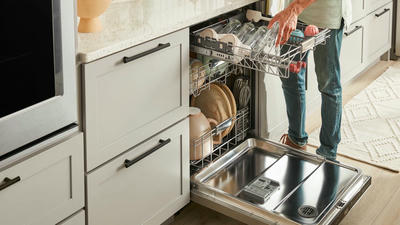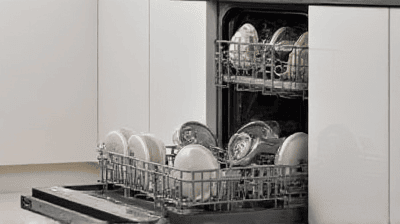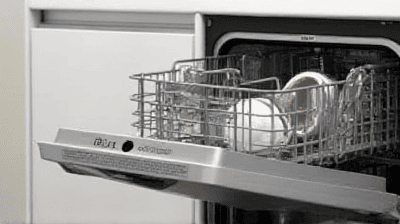5 Simple Steps to Maintain Your Dishwasher's Efficiency

Your dishwasher is one of the most valuable appliances in your kitchen, saving you time and effort while ensuring that your dishes are cleaned thoroughly. However, to keep your dishwasher performing at its best, it requires regular maintenance. Neglecting this essential appliance can lead to reduced efficiency, unpleasant odors, and even costly repairs over time.
Understanding the Importance of Dishwasher Maintenance
Why Maintain Your Dishwasher?
Efficiency and Performance: Regular maintenance ensures that your dishwasher operates efficiently, cleaning your dishes effectively while using less water and energy.
Prolonged Lifespan: Just like any other appliance, maintaining your dishwasher can extend its lifespan, saving you from premature replacement costs.
Preventing Breakdowns: Routine check-ups and cleaning can help identify potential issues early, preventing unexpected breakdowns that can disrupt your kitchen routine.
Hygiene and Sanitation: A well-maintained dishwasher is crucial for keeping your kitchen hygienic. Food debris and residue can lead to bacterial growth and foul odors.
Cost Savings: Efficient dishwashers use less water and energy, leading to lower utility bills over time.
Now that we understand the importance of maintenance, let’s delve into the five simple steps that can help maintain your dishwasher's efficiency.
Step 1: Regularly Clean the Filter

Understanding the Role of the Filter
The filter in your dishwasher plays a crucial role in trapping food particles and debris, preventing them from recirculating onto your clean dishes. Over time, food residue can build up, clogging the filter and affecting the dishwasher’s performance.
How to Clean the Filter
1. Locate the Filter: The filter is usually located at the bottom of the dishwasher. Consult your user manual for specific instructions on how to access it.
2. Remove the Filter: Gently twist or pull the filter to remove it from the appliance. Be careful not to break any components.
3. Clean the Filter: Rinse the filter under warm running water to remove any food particles. For stubborn residue, scrub it gently with a soft toothbrush or sponge. Avoid using steel wool or abrasive cleaners, as they can damage the filter.
4. Reinstall the Filter: Once clean, reinstall the filter by aligning it correctly and twisting or pressing it back into place.
5. Frequency of Cleaning: It’s advisable to clean your dishwasher filter every month or more frequently if you have a large household or frequently wash heavily soiled dishes.
Step 2: Check and Clean the Spray Arms
The Importance of Spray Arms
The spray arms distribute water throughout the dishwasher to clean your dishes. If they become clogged or obstructed, it can lead to poor cleaning performance.
How to Clean the Spray Arms
1. Remove Spray Arms: Depending on your dishwasher model, the spray arms may be removable. Check your user manual for instructions on how to detach them.
2. Inspect for Clogs: Look for any food particles or debris lodged in the spray arm holes. If you find any, use a toothpick or a small brush to dislodge them.
3. Rinse with Water: Rinse the spray arms under warm water to remove any remaining debris.
4. Reattach the Spray Arms: Once clean and dry, reattach the spray arms securely in place.
5. Regular Maintenance: Aim to check and clean the spray arms every month to ensure optimal performance.
Step 3: Wipe Down the Interior and Door Seals

Why Clean the Interior and Door Seals?
Over time, food residue and moisture can accumulate inside your dishwasher, leading to unpleasant odors and potential mold growth. The door seals are particularly susceptible to buildup, which can affect their ability to create a tight seal.
How to Clean the Interior and Door Seals
1. Empty the Dishwasher: Start by emptying the dishwasher of any dishes.
2. Clean the Interior: Use a damp cloth or sponge with a mild dish soap solution to wipe down the interior walls, bottom, and door of the dishwasher.
3. Focus on the Door Seals: Pay special attention to the rubber seals around the door. Use a soft toothbrush to scrub any visible grime and ensure that the seals remain flexible.
4. Rinse and Dry: After cleaning, rinse any soap residue off with a damp cloth and dry the interior with a towel.
5. Routine Cleaning: Incorporate this interior cleaning into your monthly maintenance routine to keep your dishwasher fresh and free of odors.
Step 4: Run a Cleaning Cycle
The Value of Cleaning Cycles
Running a cleaning cycle helps eliminate mineral buildup and residue that can accumulate over time, especially if you have hard water. It’s a simple way to maintain your dishwasher’s efficiency.
How to Run a Cleaning Cycle
1. Use a Dishwasher Cleaner: Purchase a dishwasher cleaning product designed to remove grease, odors, and mineral deposits. Alternatively, you can use white vinegar or baking soda as a natural cleaner.
2. Add to Dishwasher: If using a commercial cleaner, follow the instructions on the packaging for usage. For vinegar, pour a cup of white vinegar into a dishwasher-safe container and place it on the top rack. For baking soda, sprinkle about a cup of baking soda evenly on the bottom of the dishwasher.
3. Run the Dishwasher: Close the dishwasher door and run it on the hottest cycle available. This helps dissolve any buildup effectively.
4. Regular Frequency: Aim to run a cleaning cycle monthly or every couple of months, depending on your usage habits.
Step 5: Maintain the Dishwasher's Exterior

Why Maintain the Exterior?
While the interior is critical for performance, the exterior of your dishwasher also requires care. Regular maintenance of the exterior helps keep your appliance looking new and can prevent surface damage.
How to Clean the Dishwasher's Exterior
1. Choose the Right Cleaner: Select a cleaner suitable for your dishwasher’s finish. For stainless steel models, use a stainless steel cleaner; for painted finishes, mild dish soap and water will suffice.
2. Wipe Down the Surface: Using a damp cloth, wipe down the exterior surfaces, including the control panel, door, and sides.
3. Clean the Dishwasher Handle: Pay attention to the handle, as it can collect fingerprints and grime. Use a soft cloth to clean it thoroughly.
4. Avoid Abrasives: Do not use abrasive cleaners or scrubbers as they can scratch the surface.
5. Frequency of Cleaning: Wipe down the exterior weekly or as needed to keep it looking its best.
Additional Tips for Dishwasher Efficiency
While the five steps outlined above are essential for maintaining your dishwasher’s efficiency, consider implementing the following additional tips:
1. Load the Dishwasher Properly
Avoid Overloading: Overloading can prevent water and detergent from reaching all surfaces. Load items according to your manufacturer’s guidelines for optimal cleaning.
Position Dishes Correctly: Place larger items on the bottom rack and smaller items on the top rack. Ensure that they are facing downward and not blocking spray arms.
2. Use the Right Detergent
Choose a High-Quality Detergent: Invest in a good dishwasher detergent that is effective yet gentle on your appliance.
Follow Manufacturer’s Instructions: Use the recommended amount as indicated on the packaging. Using too much detergent can lead to residue build-up, while using too little can result in poorly cleaned dishes.
3. Check Water Temperature
Optimal Temperature: Ensure that the water temperature entering your dishwasher is around 120°F to 140°F (49°C to 60°C). This range is ideal for effective cleaning while protecting your dishes.
Adjusting Water Heater: If necessary, adjust your water heater settings to achieve the desired temperature.
4. Inspect Hoses and Connections
Check for Leaks: Regularly inspect the inlet and drain hoses for signs of leaks or wear. Replace damaged hoses promptly to prevent water damage.
Ensure Proper Connections: Make sure that all connections are secure to prevent any issues with water flow.
5. Descale if Needed
- Hard Water Deposits: If you live in an area with hard water, mineral deposits can accumulate in your dishwasher, affecting performance. Consider using a descaling agent periodically to combat this issue.
Conclusion
Maintaining your dishwasher's efficiency does not take a lot of time or effort, yet it is essential for keeping this vital appliance running smoothly. By following the five simple steps outlined in this guide—cleaning the filter, inspecting the spray arms, wiping down the interior and door seals, running a cleaning cycle, and maintaining the exterior—you can ensure that your dishwasher remains a reliable ally in your kitchen.
Regular maintenance not only enhances the performance of your dishwasher but also contributes to a more hygienic and organized kitchen environment. With a few proactive measures, you can enjoy spotless dishes and extend the life of your appliance while minimizing energy consumption. Embrace these maintenance habits today and enjoy the benefits of a well-functioning dishwasher for years to come.


